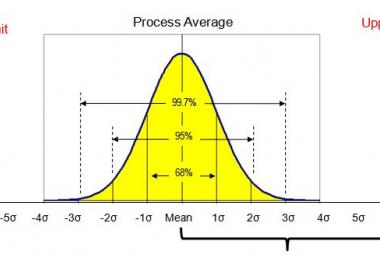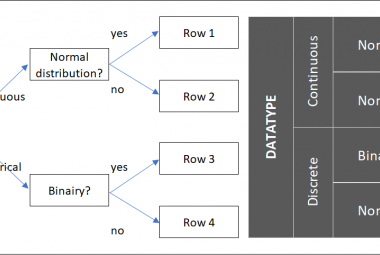There is a lot of misconception about the principles of the Lean philosophy . In the past 30 years, the term Lean was implemented in different ways within organizations and described in literature various ways. After 2.5 years of learning and experimenting at my current employer, I would describe the Lean philosophy using five basic principles which should prevent lots of confusion, questions and disappointments during a Lean implementation: Lean is a culture (1), the goal of Lean is to satisfy your customers (2), Lean focuses on reducing Mura, Muri and Muda (3), Lean improves task autonomy and responsibilities for operators (4) and Lean transforms the entire organization (5).
1. Lean is a culture in which people use tools to continuously solve problems
Many lean implementations fail because tools are implemented without using them for the purpose they were invented: to be used by people to continuously improve their processes (Rother, 2010).
In a Lean organization, tools are used to visualize problems and people are trained to solve these problems. For instance, the purpose of Kanban is to eliminate itself (to optimize the delivery time) by improving the product flow. The purpose of Heijunka (production leveling) is not to force the organization to produce each product every day, but a tool for people to learn how to improve changeovers, which results in a reduction of changeover costs and improved flexibility.
2. The goal of Lean is to provide customers exactly what they want, how they want it and when they want.
The highest priority of an organization is to deliver to its customers. After all, customer provide the necessary revenue and cash flow needed to secure the future of the organization (Balle & Balle, 2010).
Lean tools help the organization in becoming more flexible and efficient, for example by reducing inventories, but it should never result in reduced reliability to your customers.
3. Lean focuses on reducing Mura (variation), Muri (overload) and Muda (waste)
Muda is not the only ‘M’ which Toyota is trying to minimize to produce efficiently. Muda is caused by Muri, which, in turn, is caused by Mura (Liker, 2004). Therefore, the best method to reduce Muda is to reduce Mura.
Available tools to reduce each of the 3 M’s are described in the series of articles: The 3M model Toyota – Muda Mura Muri.
4. In a Lean organization, work of operators is autonomous and divers.
Employees often think that using standard work to reduce Mura leads to monotonous work for operators. This is not the whole truth. In a Lean organization, reducing non-value-adding activities results in freeing up time which allows operators to perform other tasks like autonomous maintenance on machinery or further improving their processes through Kaizen.
Because improvement and maintenance activities can be done by operators, support groups like the quality department and technical support groups can focus on more complex improvement projects.
5. Lean helps to transform the entire organization
Lean does not only implies improvements in production. Mangement-waste that arises within support groups can be reduced through Hoshin Kanri (KPI breakdown) and defining an accurate steering and accountability structure. As a result, only the problems that arise at the shop floor are discussed in the organization and only actions that directly contribute to the long-term organizational objectives will be set out.
Additionally, all employees contribute to continuously improving processes, for example by regularly performing Kamishibai (mini-audits) to learn what problems arise at the shop floor and help colleagues in finding and solving the next problem.
The five principles described are based on five misconceptions about Lean, which are based on literature, discussion groups on linked-in and my personal experience. A Lean implementation based on five principles will increases the chance of achieving the great results which are often associated with Lean Production.
Continue to:
REFERENCES:
Ballé, F., Ballé, M.,2005, De Goudmijn – een Roman over Lean Transformatie, Driebergen (NL): Lean Management Instituut (order this book)
Liker, J., 2004, The Toyota Way, 14 management principles from the world greatest manufacturerNew York: Mc-Graw Hill (summary / order this book)
Rother, M., 2010. Toyota Kata: Managing people for Improvement, Adaptiveness and Superior Results, New York: Mc-Graw Hill (summary / order this book)















